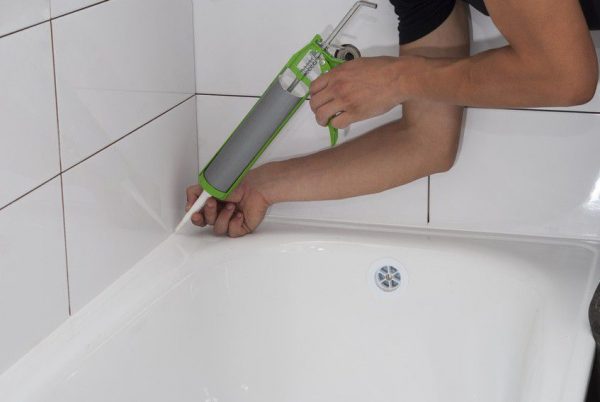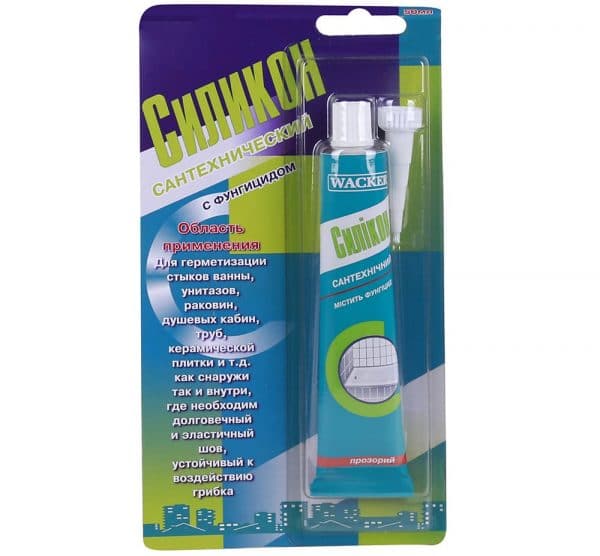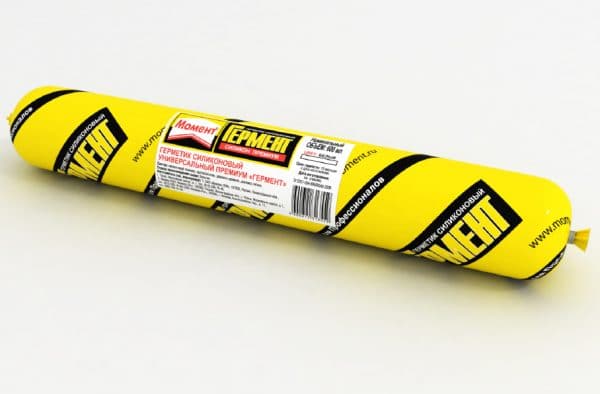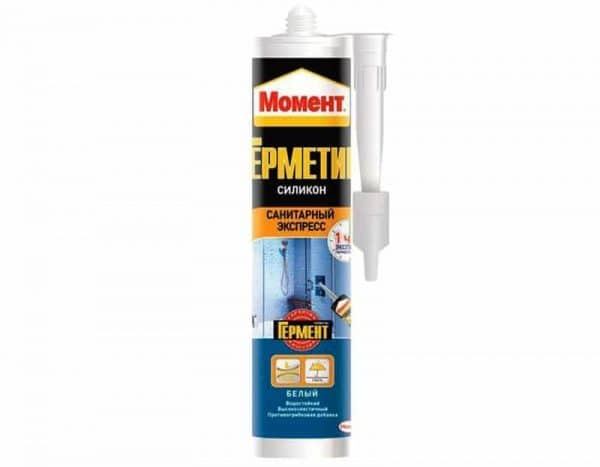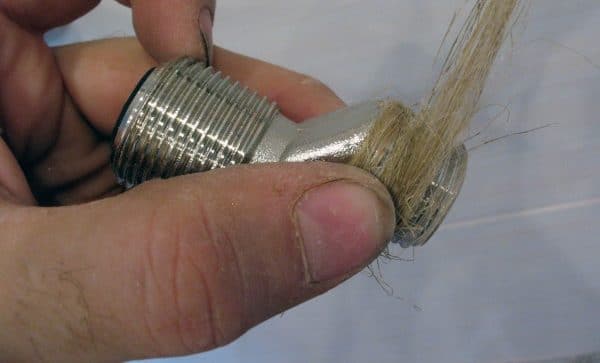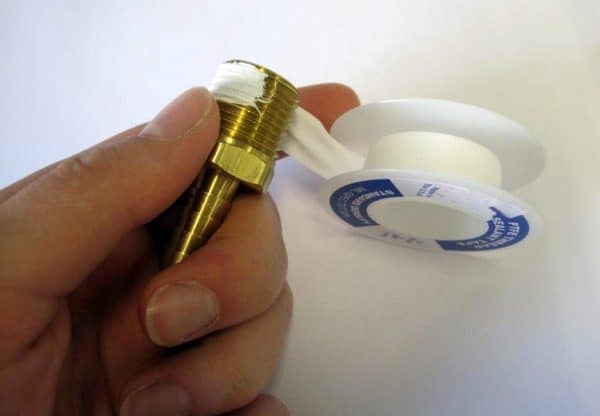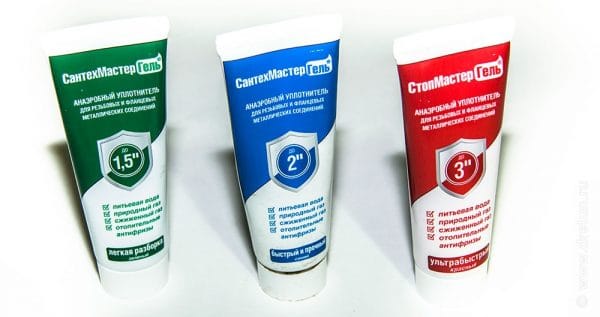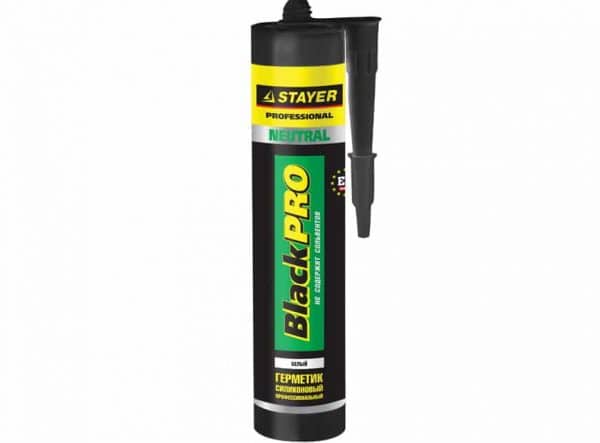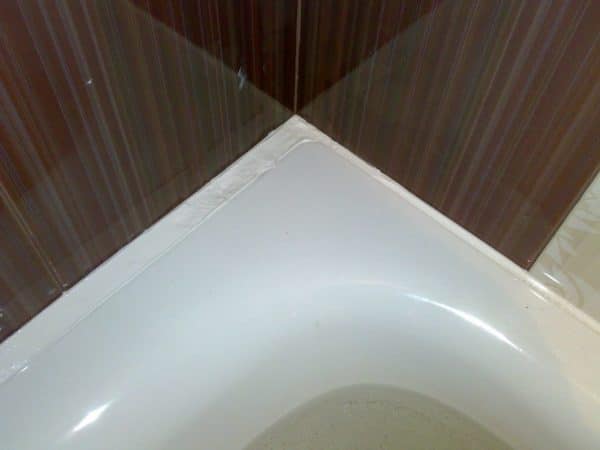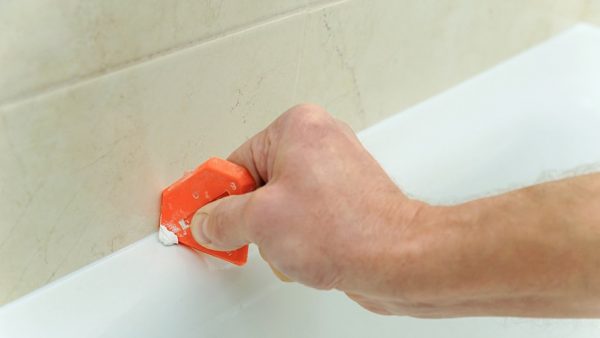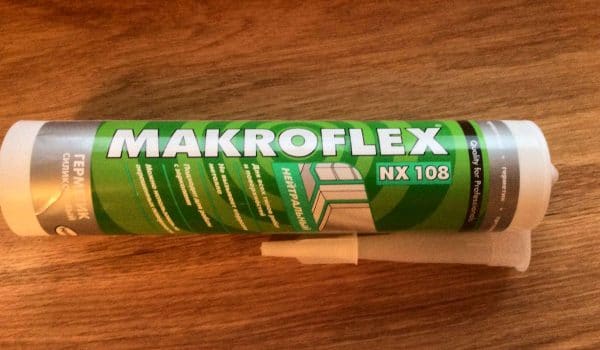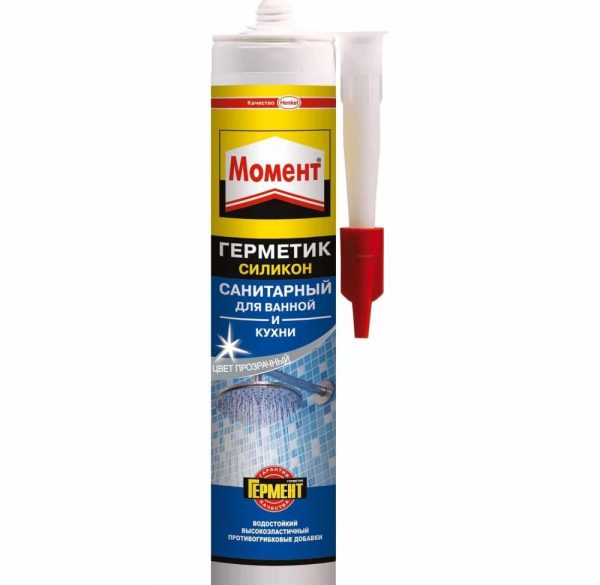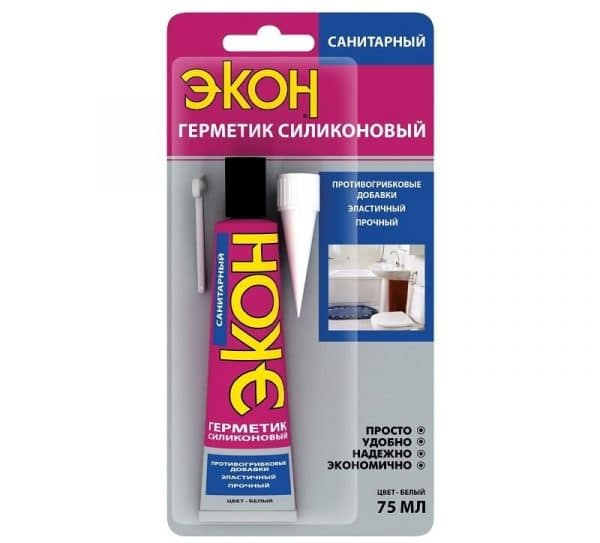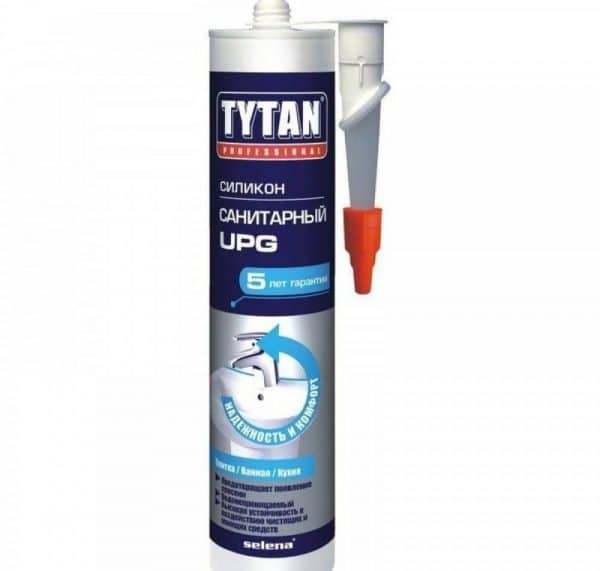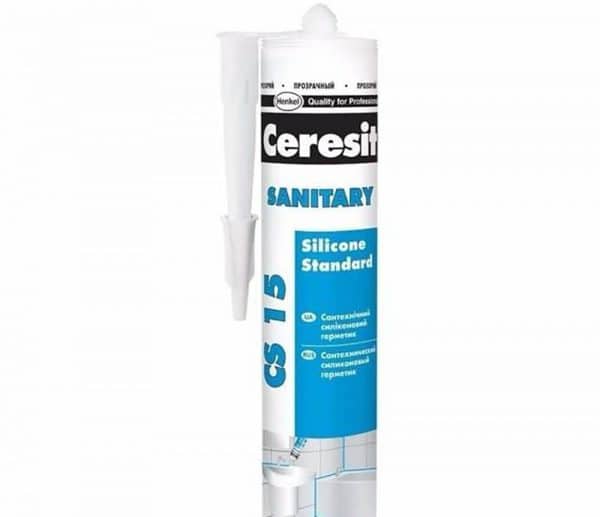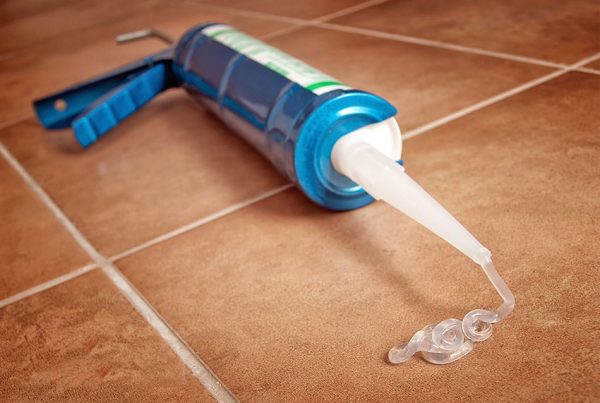During the construction or repair of houses and apartments, it is often necessary to replace plumbing equipment or install water pipes. The greatest difficulties are usually encountered when performing various joints and seams, because for their long and efficient service it is necessary to qualitatively adjust the parts and provide reliable sealing. For the exclusion of leaks, a plumbing sealant is responsible - a polymer composition that can repair even the smallest seams and seal any nodes in the bathroom and toilet.
- Scope and performance
- What problems does plumbing sealant solve?
- Sealant composition
- Release Forms
- Basic composition requirements
- Sealant Types
- Linen Sealant
- FUM tape
- Plumbing thread
- Liquid sealants
- Anaerobic Plumbing Sealant
- Silicone compounds
- DIY joint sealing
- Surface preparation
- Sealing
- Seam creation
- Finishing
- How much does the sealant dry?
- How to remove the product?
- Popular manufacturers
- Makroflex
- "Moment"
- Econ
- Tytan
- Ceresit
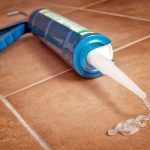
Scope and performance
Most often, such a sealant is used in the installation of plumbing: it helps to seal joints that water can get into, as a result of which mold will settle there. The tool is perfect for sealing the seams between the wall and the bathroom, shower, sink, toilet, countertop. High-quality sealants are used when laying or replacing water supply and sewage elements. When assembling pipes, they will eliminate leakage and increase the service life of the assembly.
Since most sanitary sealants have antiseptic properties, they are suitable for mounting window systems inside and outside buildings, helping to prevent mold and mildew. Also, any of the sealants can be used for other purposes:
- roofing work;
- hardening of greenhouses;
- sealing joints in masonry;
- installation of vinyl cladding;
- mirror mounts.
A good sealant has the following qualities:
- high level of elasticity, the possibility of applying to deformable substrates, movable elements and parts of structures;
- resistance to water, steam, condensate, chemicals and UV radiation;
- excellent adhesion with ceramics, concrete, tile, stone, glass;
- tolerance of temperature differences;
- versatility and low consumption.
What problems does plumbing sealant solve?
Experienced plumbers recommend taking the bathroom sealing issues as seriously as possible. The risk of leakage is always maintained, and only the use of special formulations helps to reduce this danger. If there are holes between the wall and the bathroom, mold will probably appear in the room, and the leakage of the water supply system can threaten serious troubles at all. The most problematic areas are those where insert fitting or pipe branching is required: where the use of sealant is especially necessary.
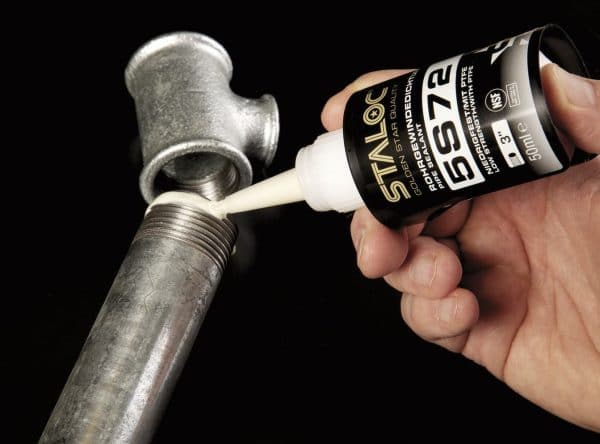
Sealant for water pipes and plumbing solves the following tasks:
- prevention of leaks, the cause of which is the presence of cracks, cracks or too strong a pressure of water;
- protection against temperature extremes arising from the regular flow of hot water;
- maintaining important parts and assemblies in integrity, extending their life;
- strengthening the effect of the use of gaskets.
Sealant composition
Silicone sealant is made on the basis of compounds of silicon and various polymers, as well as additives:
- fungicides and antiseptics to provide antifungal properties;
- organic extenders to reduce viscosity and better flow into small slots, holes;
- fillers (silica and glass dust) to enhance adhesion;
- pigments to give a certain shade.
to contents ↑Sealants with other compositions may include acrylic, polyurethane, organic solvents and other components that provide the tool with reliable adhesion and sealing ability.
Release Forms
Many sealants are sold in plastic cartridges for a 290-360 ml gun. Also, there are products on sale in tubes of 50-100 ml - in conventional or equipped with a special piston like a syringe. For large-scale plumbing works, it makes sense to purchase soft sealant packages of 600 ml or more, for the extrusion of which special guns are used.
to contents ↑Basic composition requirements
To choose a really high-quality sealant, you must evaluate its compliance with the most important criteria:
- Suitability for a particular material. Some sealants are designed to work with plastic, others are suitable for metal substrates. There are universal compounds that are suitable for any plumbing tasks. Information necessary for the user is always on the package.
- Resistance to adverse effects. A good sealant should tolerate the effects of household chemicals, alkalis, ultraviolet radiation, high and low temperatures.
- Long service life. The tool must serve at least 5 years, when it comes to sealing pipes, and up to 3-5 years when closing the joints between the wall and the bathroom, other plumbing.
- Elasticity. The sealant should not crack from vibration, temperature changes, entailing the expansion and contraction of materials. With a poor indicator of elasticity, a quick spoilage of the completed seam will occur.
- Polymerization time. If the repair in the bathroom is urgent, you need to choose the fastest drying compounds.
Sealant Types
There is a whole range of materials on the market of sealing materials that are used in plumbing works. Some have been used for decades, but are considered ineffective, others have appeared in stores recently, but they have a longer life.
Linen Sealant
Wrapping threads and joints with linen thread is the oldest method of sealing, while the cheapest and short-lived. The principle of operation of the thread is as follows: after contact with moisture, flax swells and closes cracks, leaking joints. Conventional fibers cannot be used when working with thin-walled materials: after they swell and increase in size, there is a risk of a pipeline rupture in the joint zone. Also, flax thread is not used where the pipes of the water supply system are under high pressure: a strong water pressure will still lead to leakage.
Under the influence of moisture, the flax fibers weaken and collapse in a fairly short period of time, the joint will have to be serviced regularly. From constant dampness, metal parts will begin to rust and deteriorate. To reduce the shortcomings of natural flax, manufacturers began to produce a thread of improved modification, where the fibers are impregnated with paints and varnishes. Nevertheless, after some time, even such material begins to rot and becomes worthless, and the joints are not sealed.
to contents ↑FUM tape
Ftoroplastovy sealant of materials, or FUM is a polymer tape wound on a bobbin, which is widely used in plumbing. It is made of PTFE-4, which is not subject to rot.The winding of the pipe joints with such a device gives more reliable protection against leaks than when using linen thread. The main properties of the FUM tape:
- tolerance to chemicals, ultraviolet radiation, temperature differences within –70 ... + 300 degrees;
- metal corrosion prevention;
- elimination of friction of elements against each other due to smoothness;
- longevity of service;
- small thickness;
- excellent ductility;
- lack of toxicity.
to contents ↑FUM tapes also have disadvantages. It is not suitable for sealing large diameter holes. The reverse stroke of the nut or fitting after applying the tape is not permitted: it immediately deteriorates. In joints subject to vibration, complete sealing is impossible to achieve, as well as where temperature differences occur too often.
Plumbing thread
This material is prepared on the basis of artificial fibers and is impregnated with special compounds and antiseptics. The thread does not suffer from rotting, protects the metal from rust, allows you to reliably seal pipe joints, it does not break from the reverse stroke and allows the possibility of dismantling the system. Reliable sealing is obtained even with incomplete tightening of the joints. The cost of such a thread is high, so it is less commonly used in plumbing.
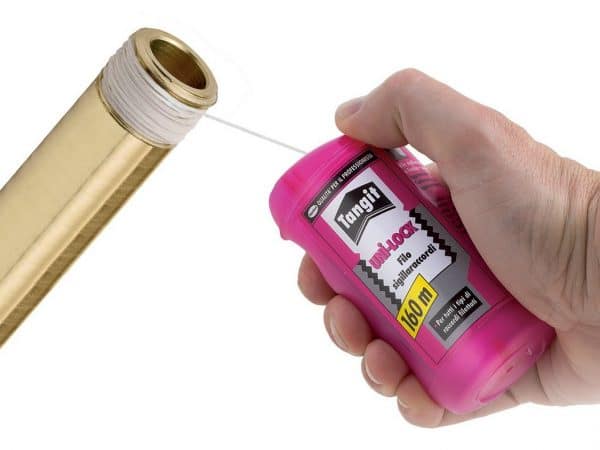
Liquid sealants
Sealants in the form of a suspension are used independently or in conjunction with FUM tape, linen or plumbing thread. In pipelines that operate under pressure, it is better not to use them without additional sealing with threads. When drying, some products cause severe shrinkage, as indicated in the instructions.
Anaerobic Plumbing Sealant
Sealants from this group freeze in an airless environment, and in the presence of air retain their fluidity. After full polymerization, they do not change volume, reliably protecting joints and seams from leaks, while having high elasticity and minimal consumption. Excess surplus funds are easily removed manually. Other advantages of anaerobic compounds:
- high adhesion with plastic and metal;
- possibility of application for any plumbing work;
- tolerance of an aggressive environment, lack of interaction with surfaces due to chemical inertness.
The price of such sealants is quite high, but the quality is at a high level, and the consumption is minimal.
to contents ↑Silicone compounds
Such sealants are the most popular during plumbing. They can be used to seal any joints and joints, grooves and crevices in the bathroom, in the kitchen. Due to the tolerance of high temperatures, the products are even suitable for repairing heating systems, and their elasticity prevents them from cracking and crumbling on deformable substrates.
Depending on the composition, rubber silicone based sealants come in two types: acidic and neutral. The first ones contain acids that can cause corrosion, therefore they are not suitable for metal products. Neutral sealants are based on amines and do not react with metals, delicate materials, therefore they are used everywhere. To enhance the sealing effect, silicone products are often used in conjunction with reinforcing meshes.
to contents ↑DIY joint sealing
Silicone compounds can be applied even without sufficient experience and knowledge - the process is simple, but is carried out strictly according to technology.
Surface preparation
From the bases on which the sealant will be applied, it is necessary to remove any dirt, dust, oil stains, the remains of old compounds (mastics, grout).After mechanical cleaning of the surfaces, degrease them with alcohol, acetone or special solutions.
to contents ↑If you have to close up the gap between the bathroom and the tile with plumbing sealant, pour water into it before starting work. When the bathtub is filled and under load, the extreme parts are always slightly deformed, and the sealing joint will immediately take the desired position.
Sealing
Most sealants in tubes and cartridges are great for installation in a mounting gun. The tool helps to apply the funds more accurately, faster, in the strictly required amount. The procedure for working with plumbing sealant:
- Remove the cap from the tube tip.
- Cut the tip of the nozzle at an angle of 45 degrees.
- Put the tube in the gun.
- Slowly and gently pulling the trigger to apply sealant.
In order for the weld quality to be good, the sealant line must be continuous. It is recommended to start it from any angle. After the completion of the seal, it is required to form the seams correctly, which will allow to distribute the composition and increase the reliability of work.
to contents ↑
Seam creation
If the sealing joint is small, you can give it the desired shape with your finger. You need to wear gloves, gently smooth the sealant, shifting the excess and directing it to where the layer came out thinner. With a significant area of the seam, smoothing is done with a narrow spatula, pre-moistened with soapy water.
Finishing
To complete the sealing, it is necessary to remove the excess composition that crawled out of the seam with a wet wipe. The initial setting time of the sealant is short, so you should act quickly, otherwise the entire seam may be damaged when removing excess. After a few days, carefully inspect the sealant layer. If defects, voids, cracks appeared on it, they must be repaired again.
to contents ↑How much does the sealant dry?
Drying time depends on the brand, humidity and air temperature, layer thickness. Curing of the compositions occurs after 15-30 minutes, and complete drying usually lasts up to 24 hours.
How to remove the product?
To get rid of fresh sealant stains, it is enough to wipe them with a wet cloth, a napkin, or wash them off with warm water and soap. After polymerization, you will have to use solvents: acetone, white spirit. Silicone sealants are well cleaned with special compounds, for example, Anti-Silicone, Foam-840. It is enough to apply a few drops of the product on the sealant layer, leave for 15 minutes, and it can be removed with a regular sponge.
to contents ↑
Popular manufacturers
To buy a really high-quality sealing compound for plumbing, it is worth giving preference to those that are produced by well-known brands.
Makroflex
Finnish sealants of this brand are widely used by masters. They are of high quality, excellent technical characteristics, environmentally friendly composition, long service life. For working with plumbing, the Makroflex NX-108 is well suited, which is useful for professional and domestic use.
to contents ↑"Moment"
In the "Moment" catalog you can find several products based on silicone or polymers that are suitable for working with heating pipes, sewers, for closing joints in the bathroom. Sealants “Silicone Universal”, “Silicone Neutral” from “Moment” are distinguished by good indicators of moisture resistance, elasticity, and durability.
to contents ↑Econ
Econ funds are allocated with low price and decent quality. The sealants of the brand are easy to use, can be applied manually or using mounting guns. These compounds are more designed for domestic use.
to contents ↑Tytan
The company's assortment includes polyurethane and silicone sealants for plumbing, as well as acrylic and bitumen based products. All products have high strength characteristics, have excellent elasticity, after drying, the seams can be painted.
to contents ↑Ceresit
The company produces a whole line of sealants with high adhesion to metal, plastic, and other plumbing materials. Means are characterized by versatility, good insulating ability, have antiseptic components in the composition.
In order not to know the problems with the operation of pipes and plumbing equipment, it is better to immediately purchase a reliable sealant and apply it in accordance with the manufacturer's instructions. In this case, the effect of complete sealing of joints and seams will be ensured, and there will be no need for repairs.

